Export Leads From Sales Navigator
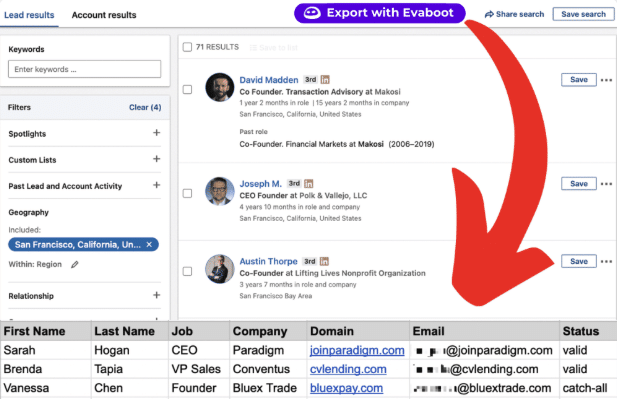
Create a clean B2B email list from LinkedIn Sales Navigator in just one click with the Evaboot Chrome Extension.
Export Leads From Sales Navigator

Create a clean B2B email list from LinkedIn Sales Navigator in just one click with the Evaboot Chrome Extension.
Contents
Many sales professionals don’t know that LinkedIn InMails can get an average response rate of 18-25% compared to 3% for cold emails.
They also have a higher response rate than classic LinkedIn messages.
LinkedIn InMails are powerful tools that allow you to contact 2nd and 3rd-degree connections without sending a connection request.
That is a great tool for sales reps and recruiters as InMail messages give access to send messages to everyone.

We’ll explore together the 12 best practices and tips for LinkedIn InMail to improve your outreach strategies and boost your response rate:
Let’s get into it!
An InMail character limit should be under 400 characters.
People don’t have time to read long messages from people they don’t know.
Everybody is busy.
We don’t want to waste time reading long and depersonalized messages.
That is why shorter InMails get a better response rate.
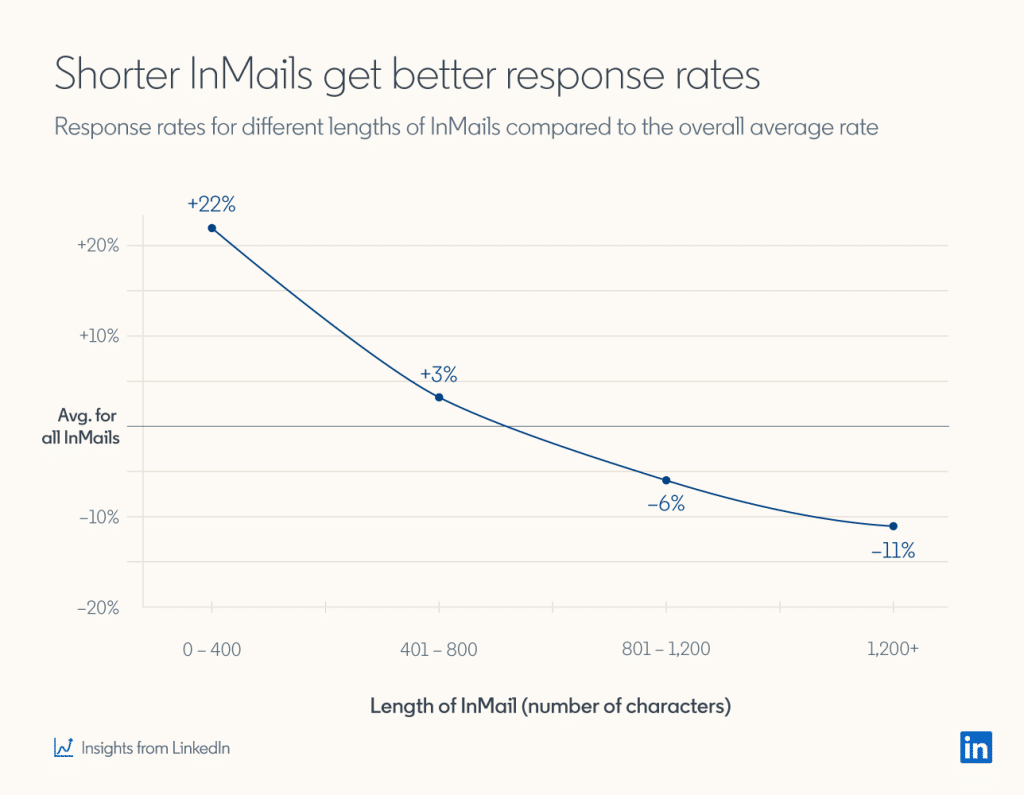
InMails with less than 400 characters get 22% more replies than other emails.
This is not so surprising.
Look at this InMail:
Do you want to spend your time reading that?
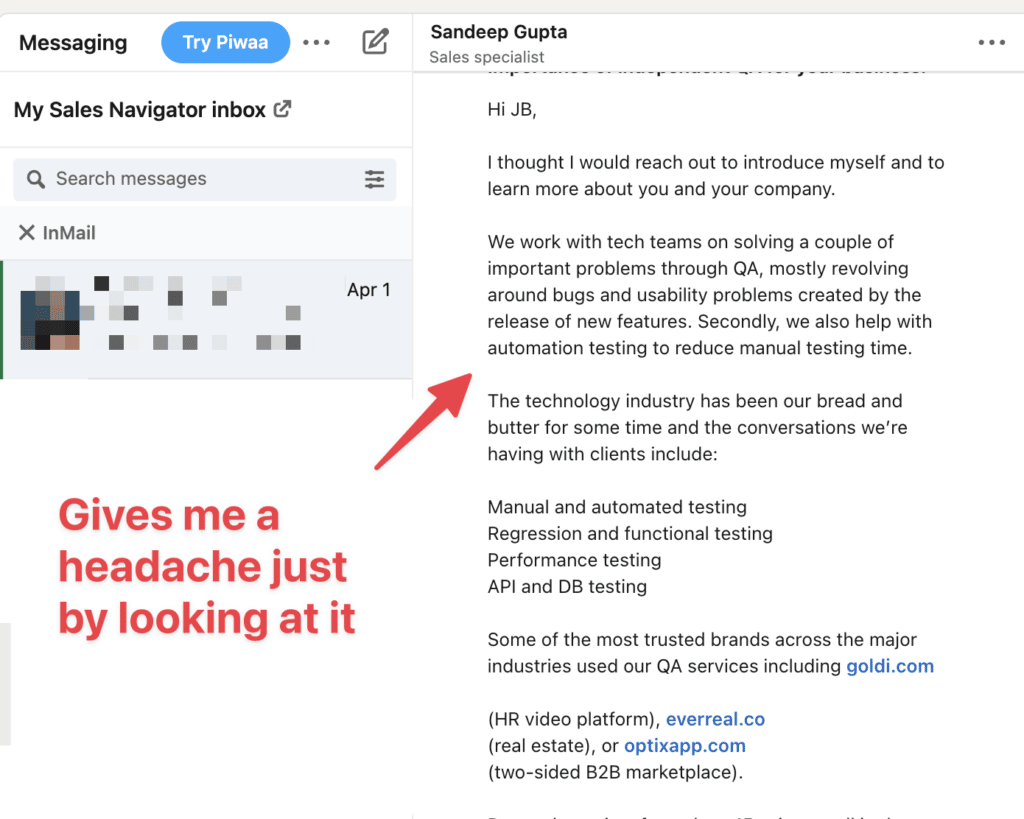
Most InMails sent on LinkedIn look like this.
This is great news for you as you can stand out just by writing short and straight-to-the-point InMails.
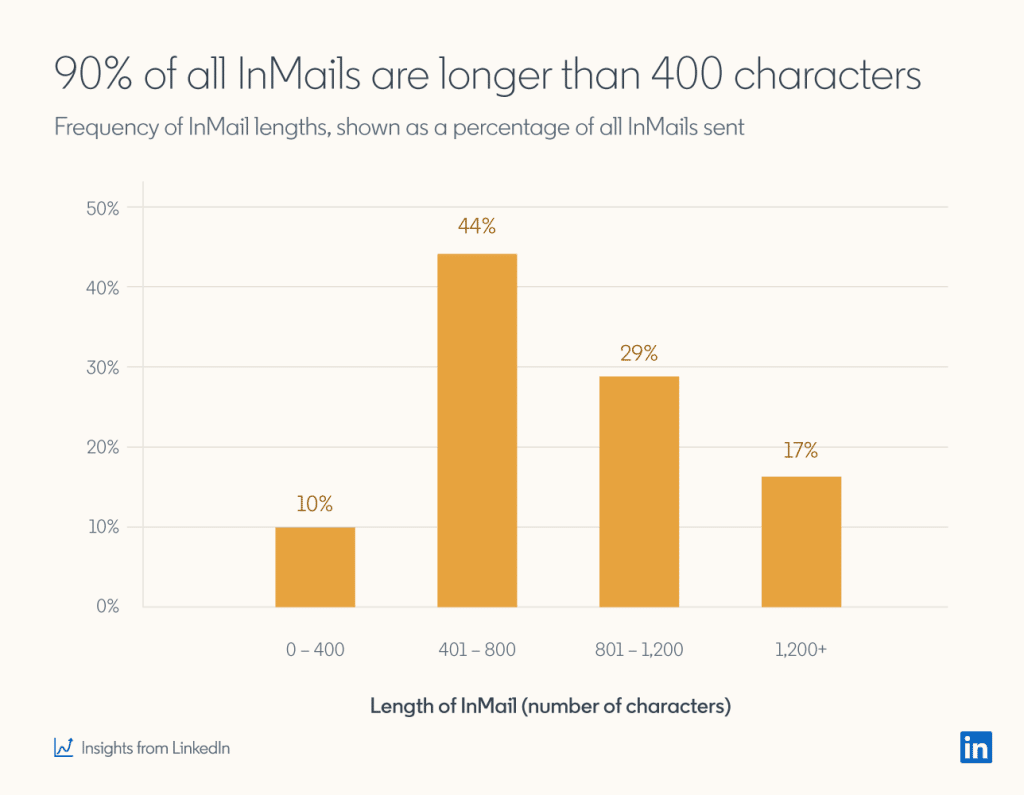
As you can see on this graph, most InMails sent are between 400 and 1200 characters, which is way too long for a first message.
When you use InMail, the first things people will see in their inbox are your profile picture and InMail subject line.
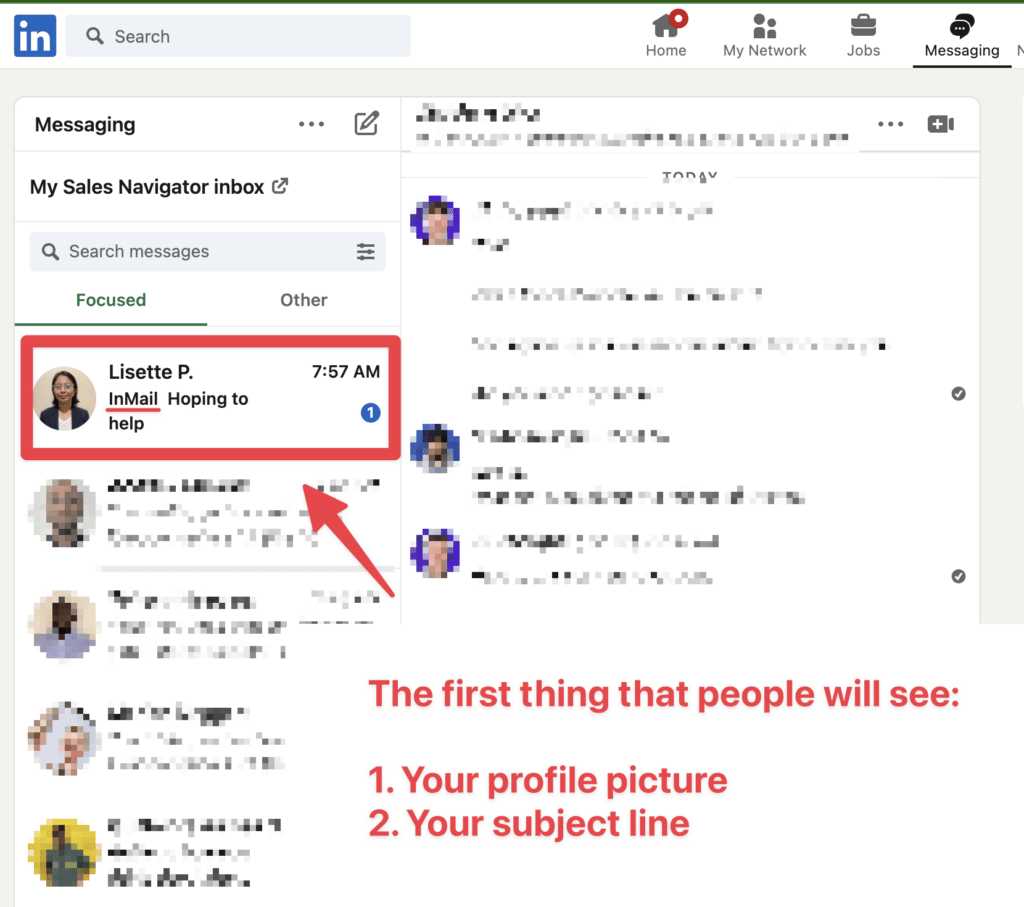
The average email open rate is about 21.6%, while InMail can bring you 57.5% open rates.
To reach this kind of rate, you must optimize your subject lines.
They have to be short and straightforward.
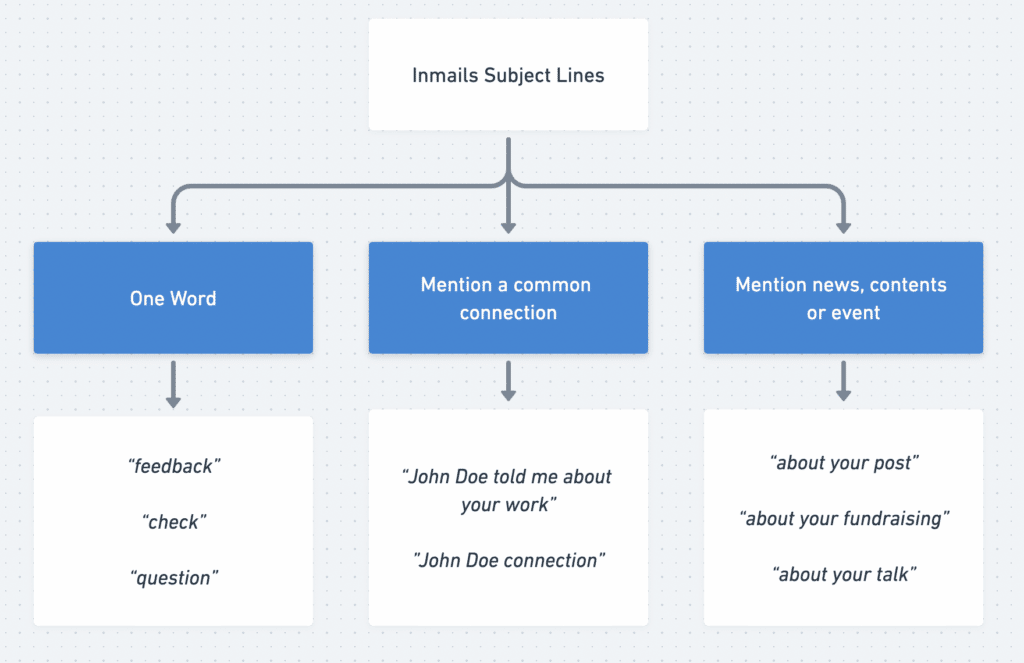
There are 3 strategies you can use:
My favorite one is using 1-word subjects because these messages look like they were sent by a colleague.
Being intentionally vague about the messages triggers people to click the notification to know more.
If you think you can copy-paste the best LinkedIn InMail templates for sales to get more replies to your InMail, you are fooling yourself.
Templates are the opposite of personalization.
However, you can use frameworks to improve the structure of your messages.

Let me introduce you to the RABT formula:
Here is an example of a message that gets a 27% reply rate.
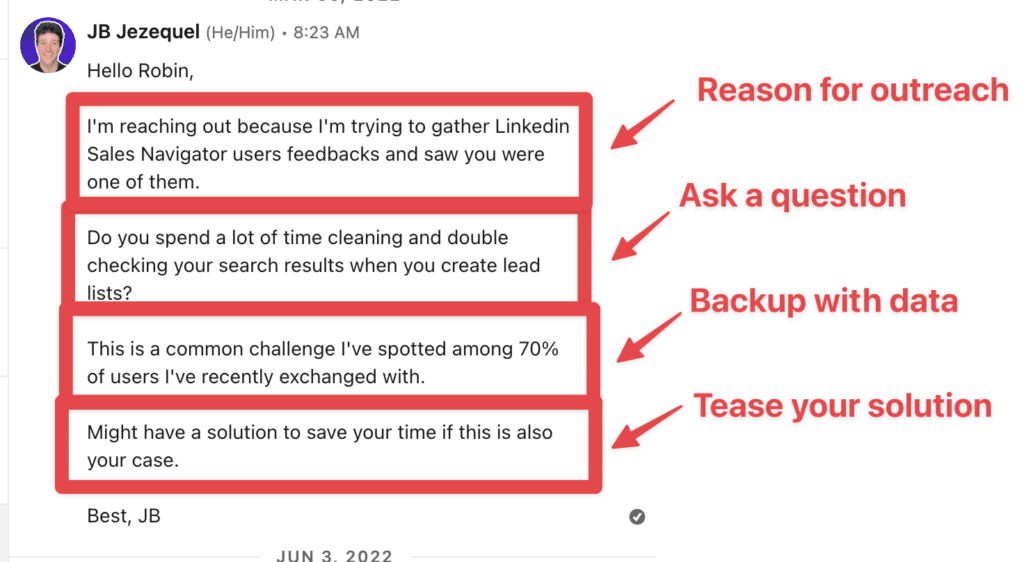
You mustn’t pitch in the first message.
The mission of the service message is to start a conversation and ensure your prospect is qualified.
Why would you want to jump on a call with someone who is not a qualified lead?
A study from LinkedIn showed InMails get fewer replies on:
Here is the graph:
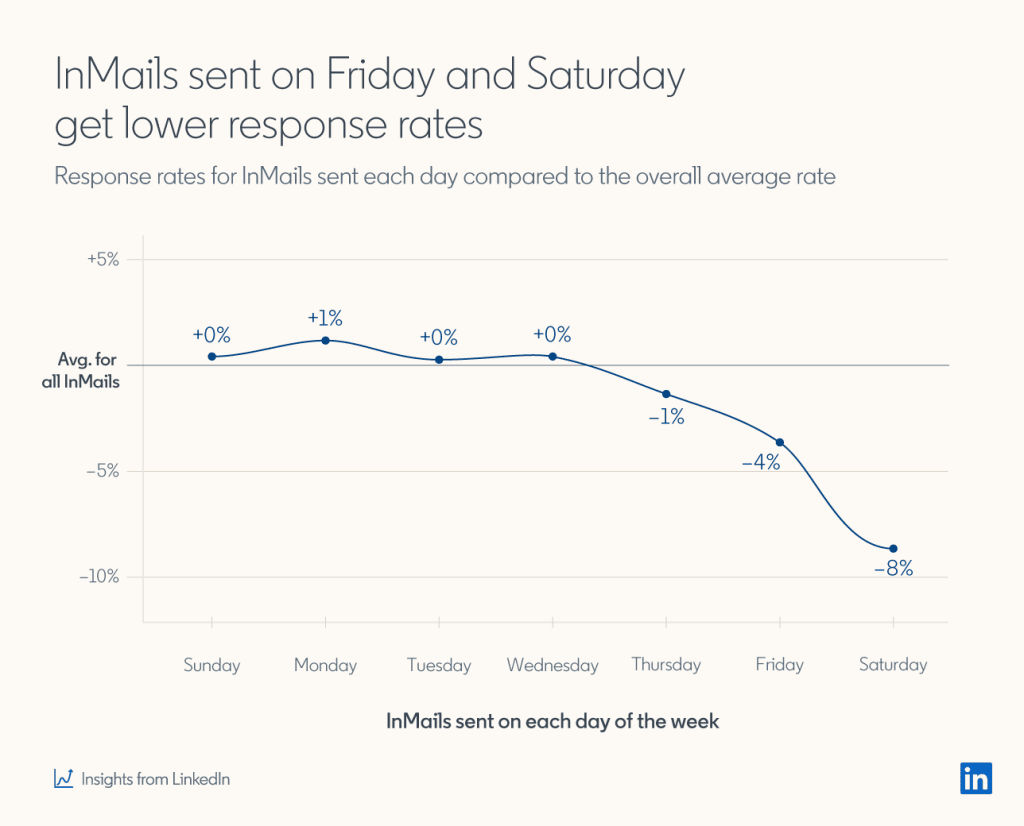
So make sure to send your InMails at the beginning of the week:
It’s a detail, but it can make a big difference in your prospects for big audiences.
The best time to send InMails on LinkedIn is between 6 am and 8 am.
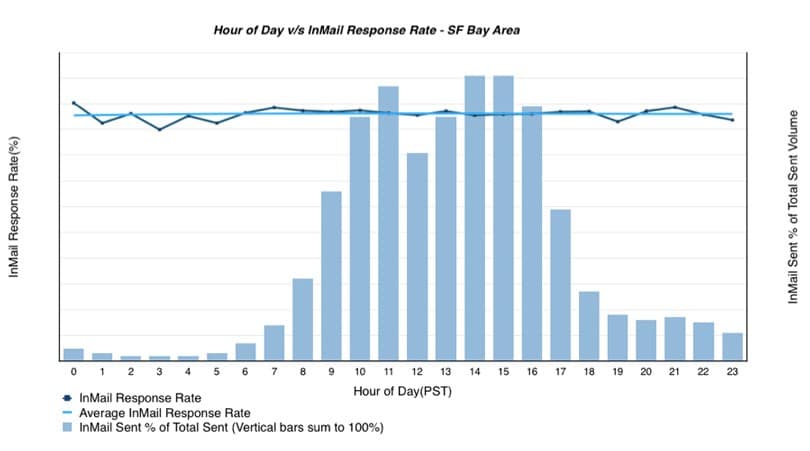
You can also send them between 8 pm and 10 pm.
However, you can see on the graph that this doesn’t make a huge difference.
What if I told you there is a way to send unlimited InMails on LinkedIn?
Sounds too good to be true?
It’s not.
You can actually send free InMails to Open Profiles.
Open Profiles is a LinkedIn premium option that allows members to say they are willing to be contacted by anyone on LinkedIn.
There is no way to detect Open Profiles on the LinkedIn search engine by using a filter.
However, using Evaboot and other third-party tools, you can find the Open Profiles in your Sales Navigator search or your leads lists.
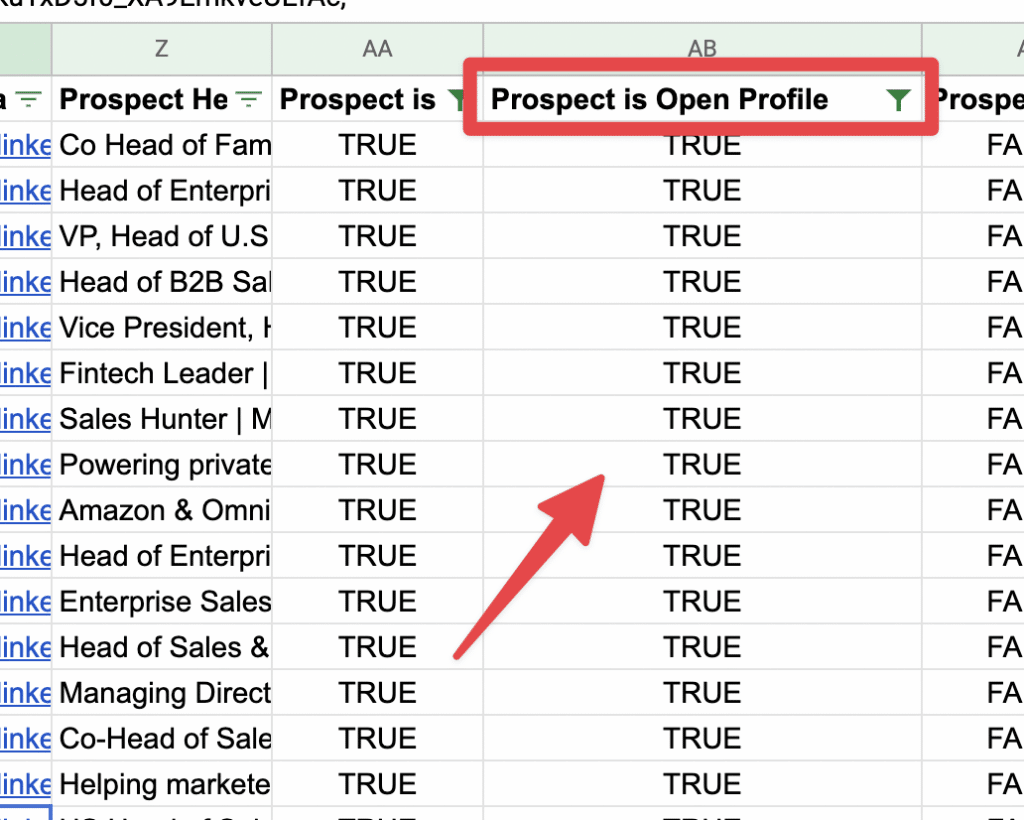
Here is the CSV you got when making an export with Evaboot.
You have a column “Prospect is Open Profile” when they mention true or false. The process is simple!
Why would people try to read and answer your messages if you don’t try to send personalized messages?
To get more replies, you must leverage the principle of reciprocity.
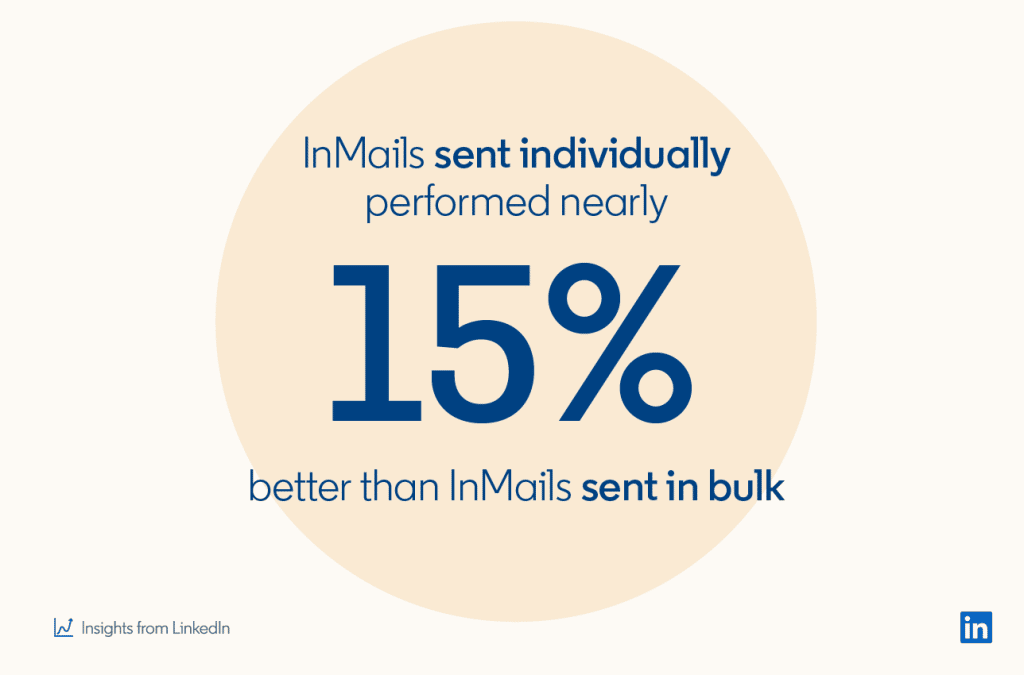
It means the more you appear to have done your homework on someone, the more likely you will get a reply.
That is why InMails sent individually perform 15% better than InMails sent in bulk.

LinkedIn offers plenty of interest signals you can leverage in your LinkedIn prospecting messages.
You use the LinkedIn search engine to find people participating in the following:
Go to a group or event and find the list of members or attendees.
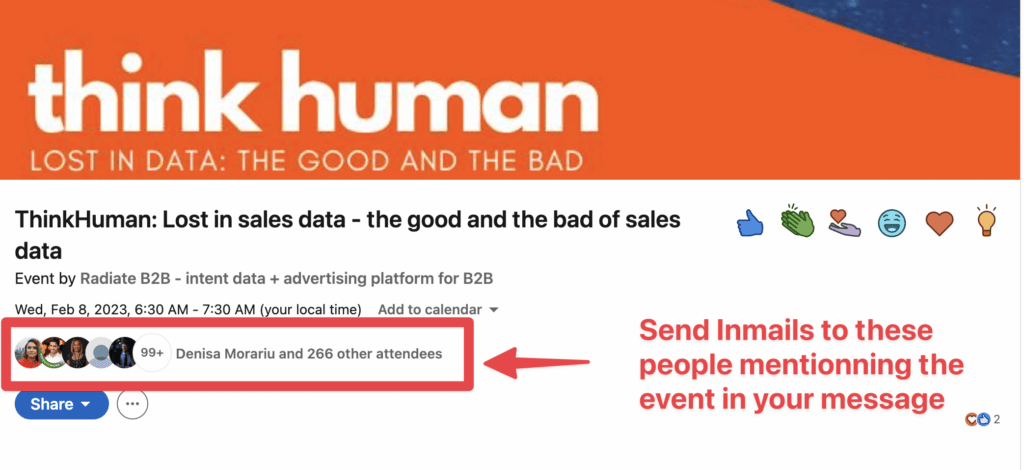
You can then contact mentioning the event or the group as an icebreaker.
You will get access to even more filters if you use Sales Navigator. Some of them can be leveraged for personalization.
You can find most of them in the “Spotlights” section in Sales Navigator
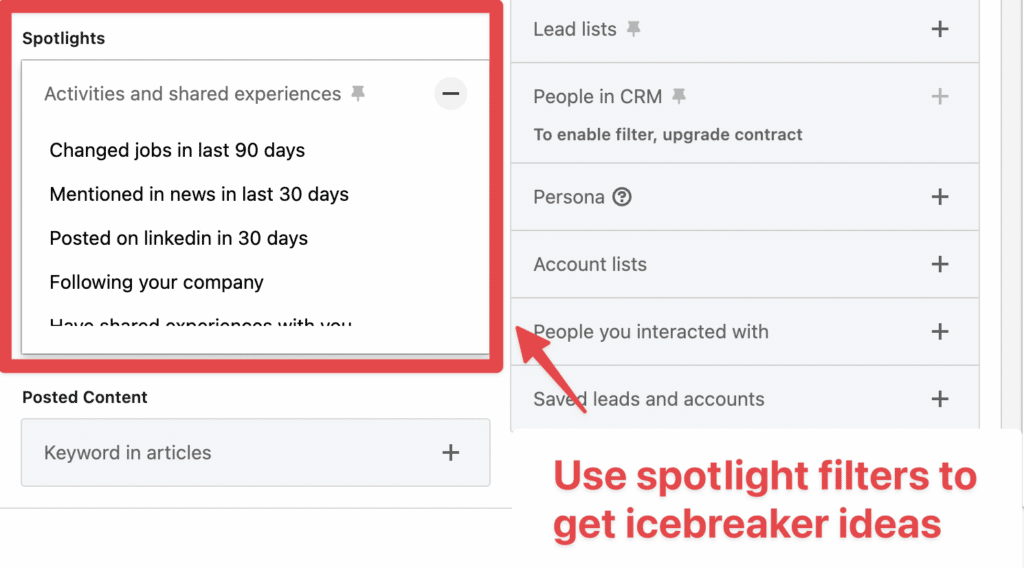
LinkedIn prospecting is about sending the right message to people at the right time.
In this triptych, targeting is by far the most important factor.
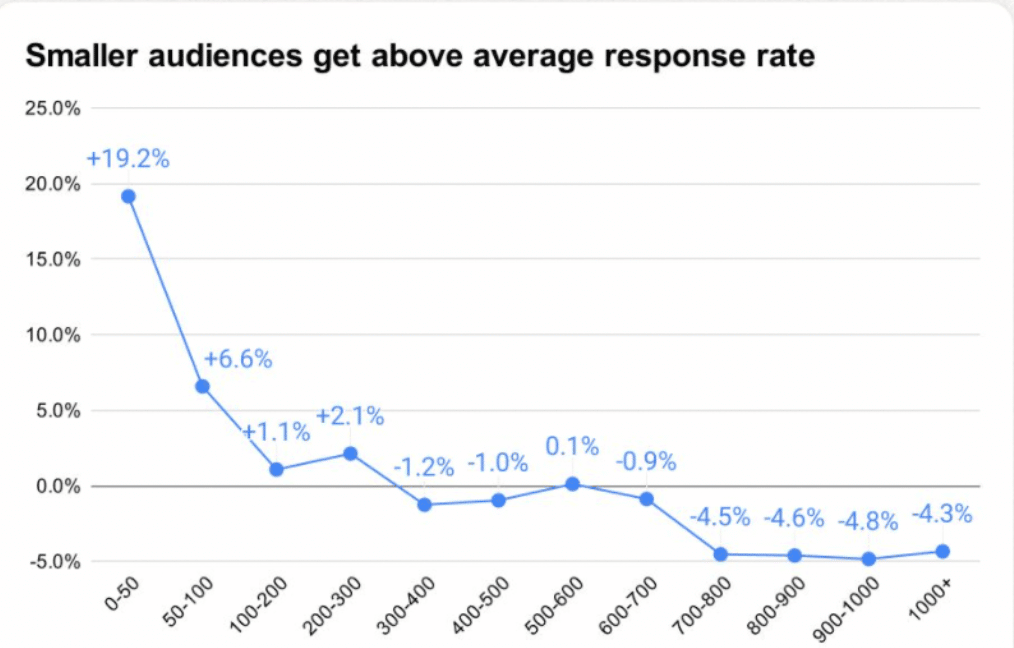
When you start prospecting, you may be tempted to send mass messages to many people, playing the quantity game instead of the quality game.
A study from LaGrowthMachine showed that smaller audiences tended to have higher reply rates.
The sweet spot is audiences between 50 and 700 people. Above this limit, open rates and reply rates tend to decrease.
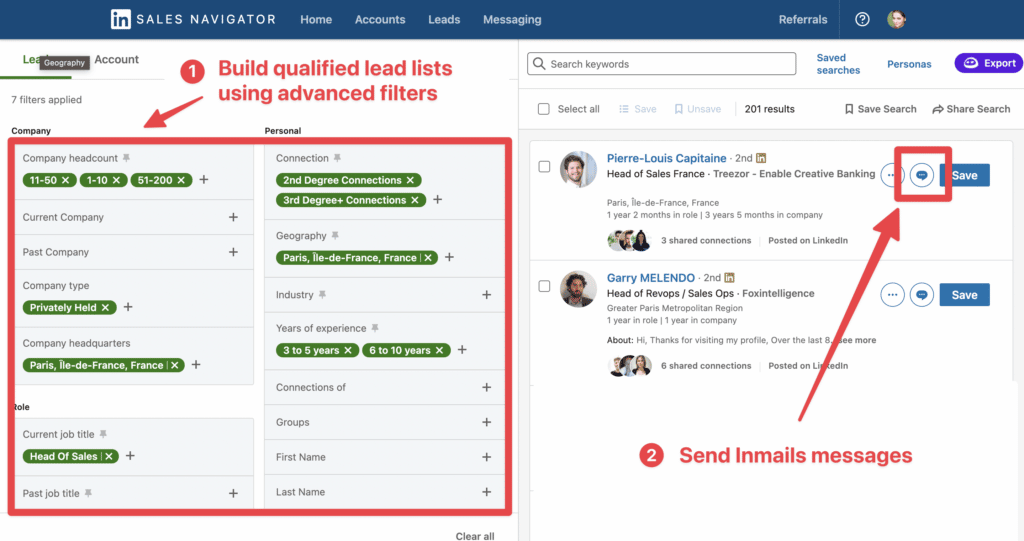
The best tool for building qualified lead lists is using LinkedIn Sales Navigator. If you have InMails credits, you probably already have it.
This video contains everything you need to know about Sales Navigator, including how to use the search filters, find the right decision makers, and send efficient LinkedIn cold outreach campaigns.
Sales Navigator doesn’t allow exporting leads into CSV, but you can still use the Evaboot Chrome Extension if needed.
That’s great. You know who to contact. The next step is to optimize your LinkedIn profile for sales.
You don’t have a 2nd chance to make a good first impression.
Sending InMails without an optimized LinkedIn profile is like spending money on ads to send traffic to a landing page that is not optimized: it’s a waste of money.
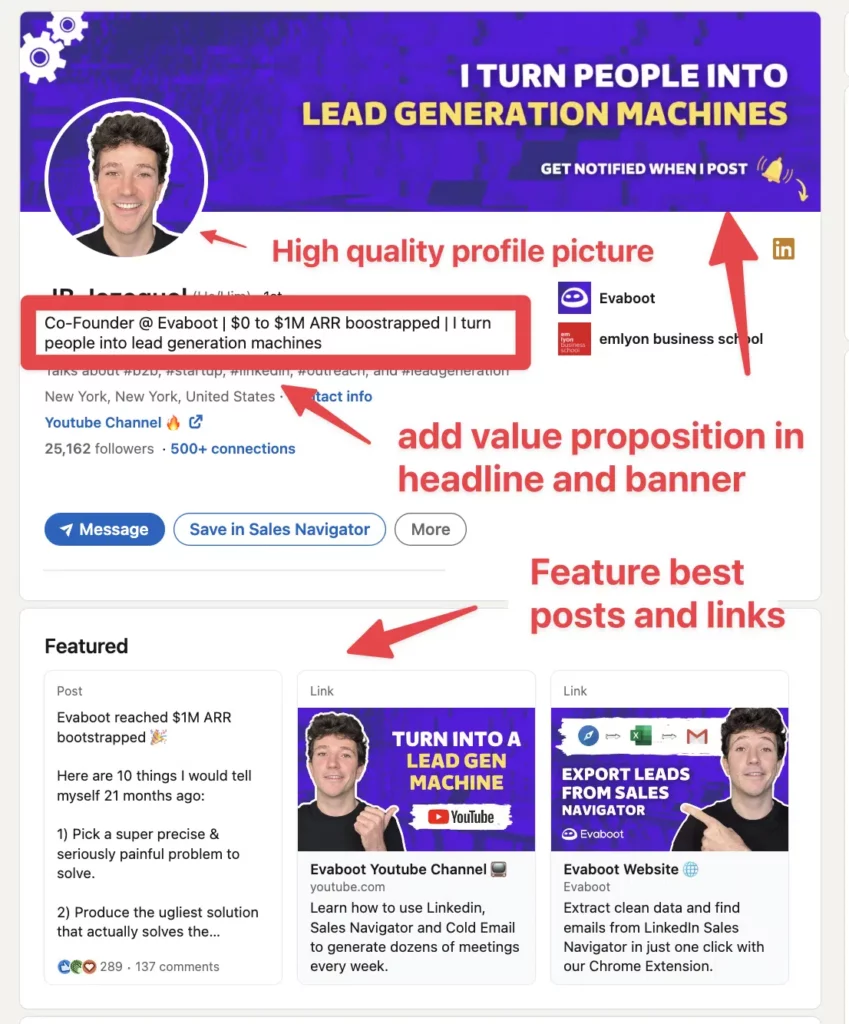
Before you send any InMail, make sure to:
Think of your LinkedIn profile as a website homepage.
Visitors have to be able to understand your value in less than 3 sec.
LinkedIn does not allow sending InMail follow-ups.
That is why you should work on the copywriting of your InMails.
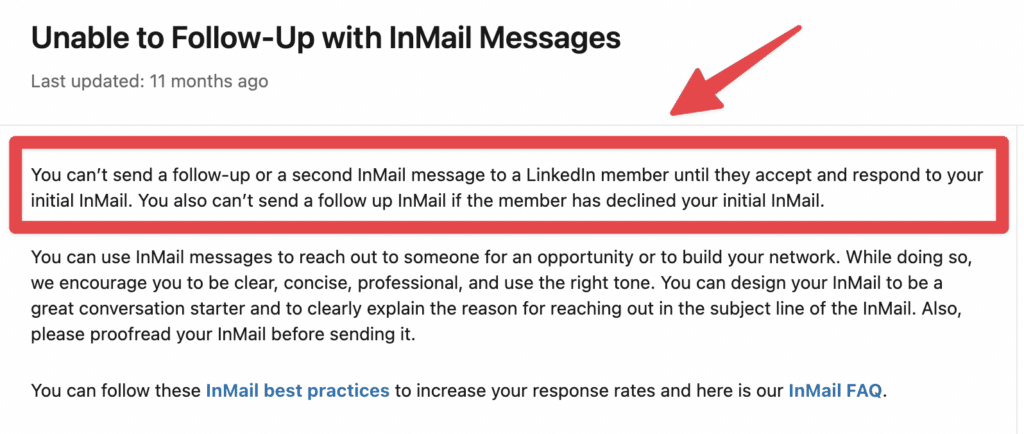
You can’t send a second InMail to get a reply.
If you want to follow up after an InMail, use email or LinkedIn messages, or other social media.
In that case, you will need a tool to extract LinkedIn URLs and get emails from LinkedIn Sales Navigator.
However, this is not the best process.
It’s better to work the other way around.
The best strategy is to keep InMails as a last resort when prospects don’t reply to emails and LinkedIn messages.
Why?
Because you only have 50 InMail monthly credits with a Sales Navigator account.
It’s your rarest resource.
On the other hand, you send up to 200 emails and 150 LinkedIn messages per day. So, you better keep these InMail messages for people who don’t respond.
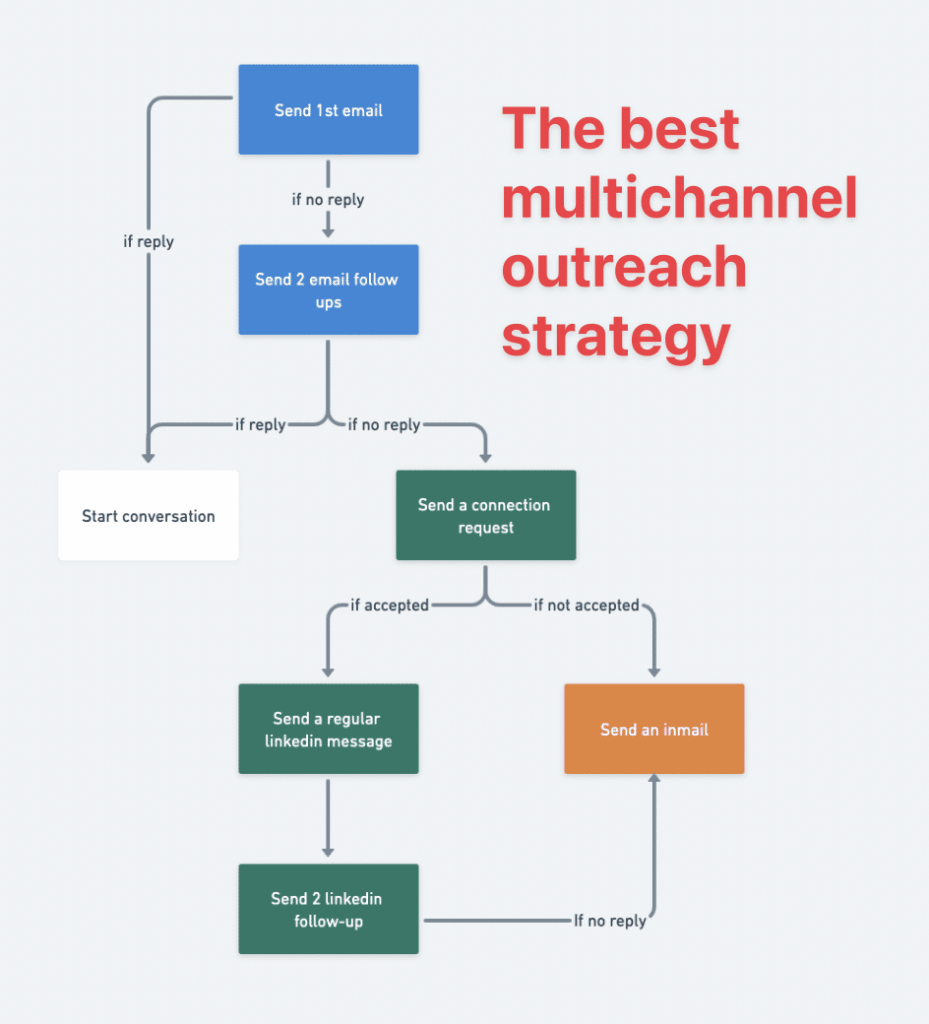
Here is how to proceed with your outreach campaign:
This process is called multichannel cold outreach, and it’s the most efficient process for prospecting today.
Sponsored Emails or Message Ads are a type of LinkedIn Ads that simulate an InMail message in your prospect’s inbox.
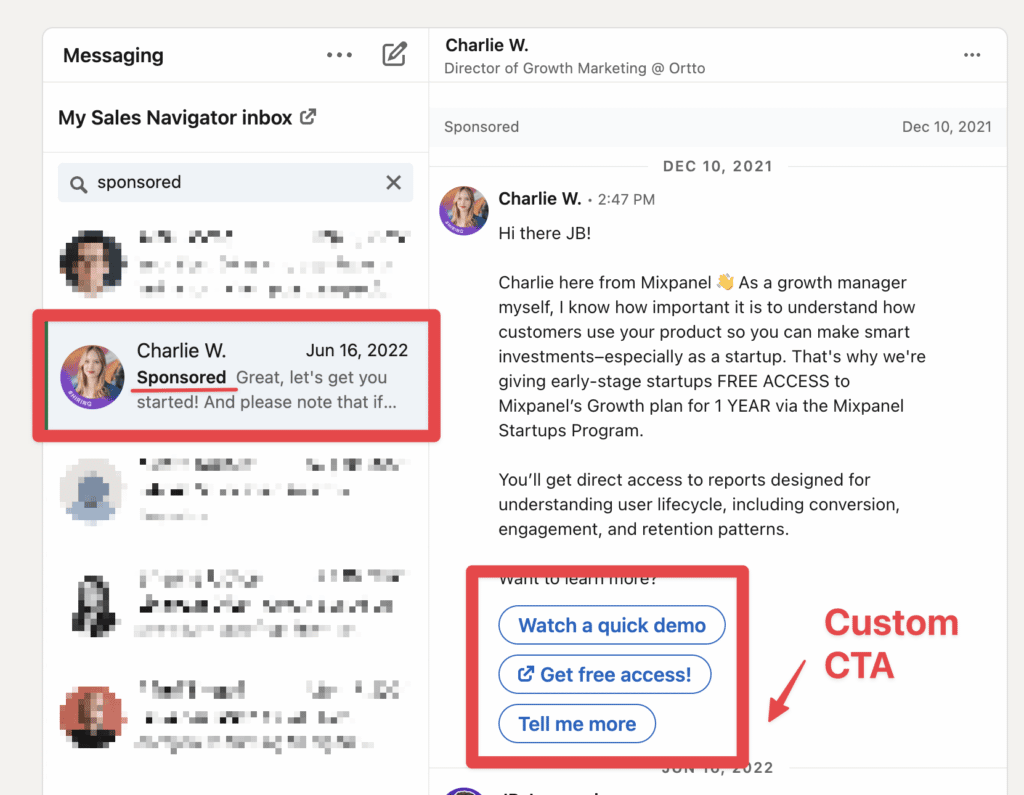
They will appear in your prospects’ inboxes like regular messages but with the mention “Sponsored” instead of “InMail.”
Replying to a Sponsored InMail (Message Ad) is impossible by writing a custom message.
The prospect interacts with your message using a custom Call To Action (CTA) you define.
If some of your target audience doesn’t reply to your Emails, Message Ads are a way to follow up.
With the help of these LinkedIn InMail best practices, you can significantly improve your outreach efforts.
From creating compelling subject lines and personalizing your messages to optimizing the timing and clarity of your InMails, these strategies will help you stand out in your recipient’s inbox.
Implementing these tips will increase your response rates and help you build stronger professional relationships!
Effective LinkedIn InMails are tailored to the recipient, showcasing that you’ve done your homework.
Personalization goes beyond just using the recipient’s name; it’s about addressing their interests or pain points.
While LinkedIn allows for longer messages, brevity is key. Busy professionals appreciate concise, straight-to-the-point messages that offer clear value.
For an effective LinkedIn InMail, start with a concise and compelling subject line.
In the message body, skip long job details. Highlight mutual connections or endorsements from trusted clients. Aim to make your InMail an invitation to a conversation.
You can send InMails as often as you want, but you are limited by your InMail credits. With a Sales Navigator, you only get 50 InMail monthly credits, so you better spend them wisely.
For a successful LinkedIn InMail:
Remember, your InMail aims to initiate a meaningful conversation, so make it as relevant and engaging as possible.
Keep your LinkedIn InMail under 400 characters for a 22% higher response rate. Messages over 800 characters tend to have lower-than-average response rates. Keep your InMail short, to the point, and friendly.
LinkedIn InMails average an 18-25% response rate, making them effective for lead generation, compared to a 3% response rate for regular messages.
In addition, up to 85% of LinkedIn InMail messages are opened by the recipient.